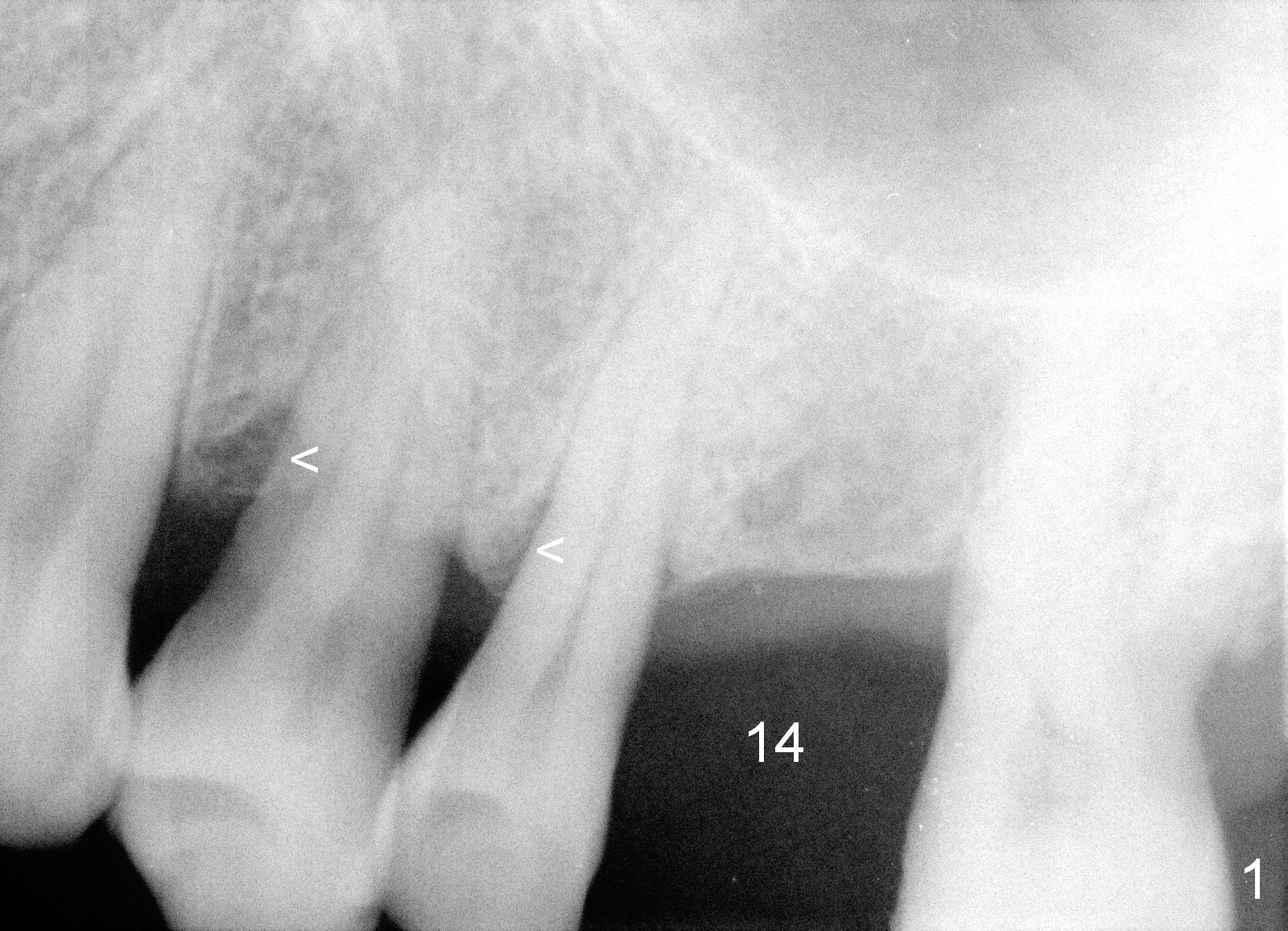
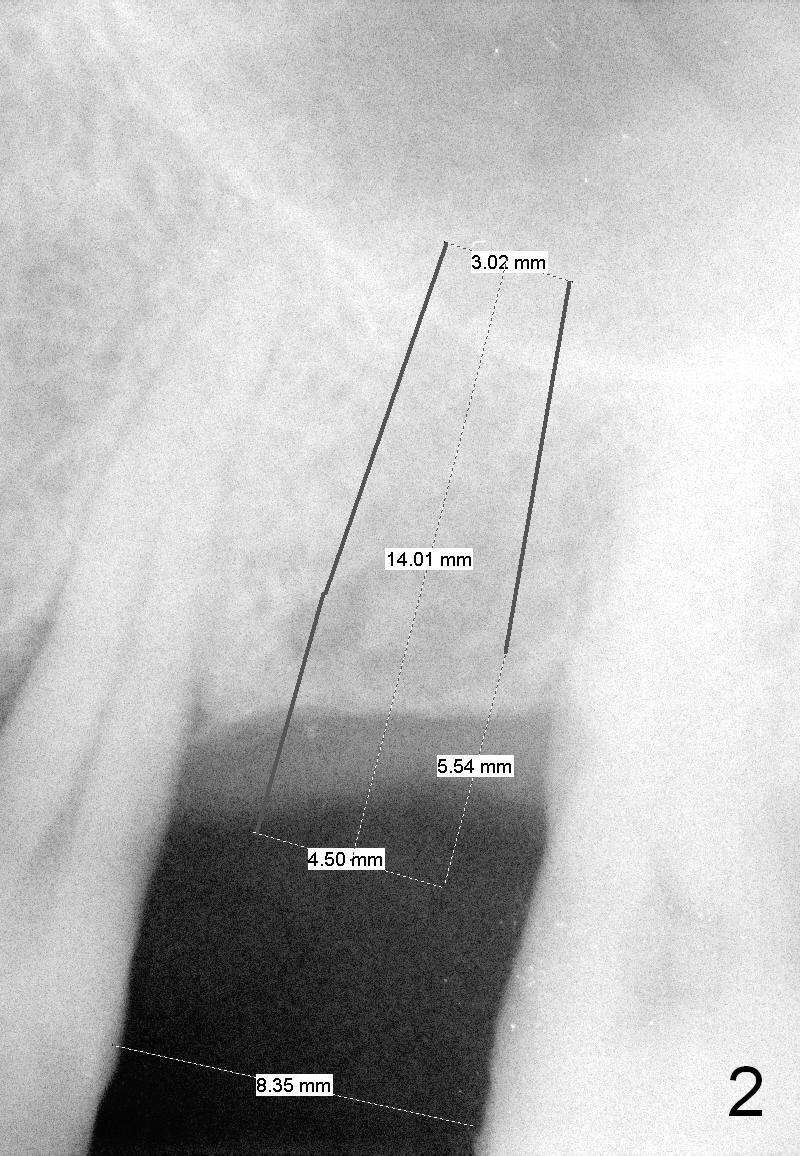
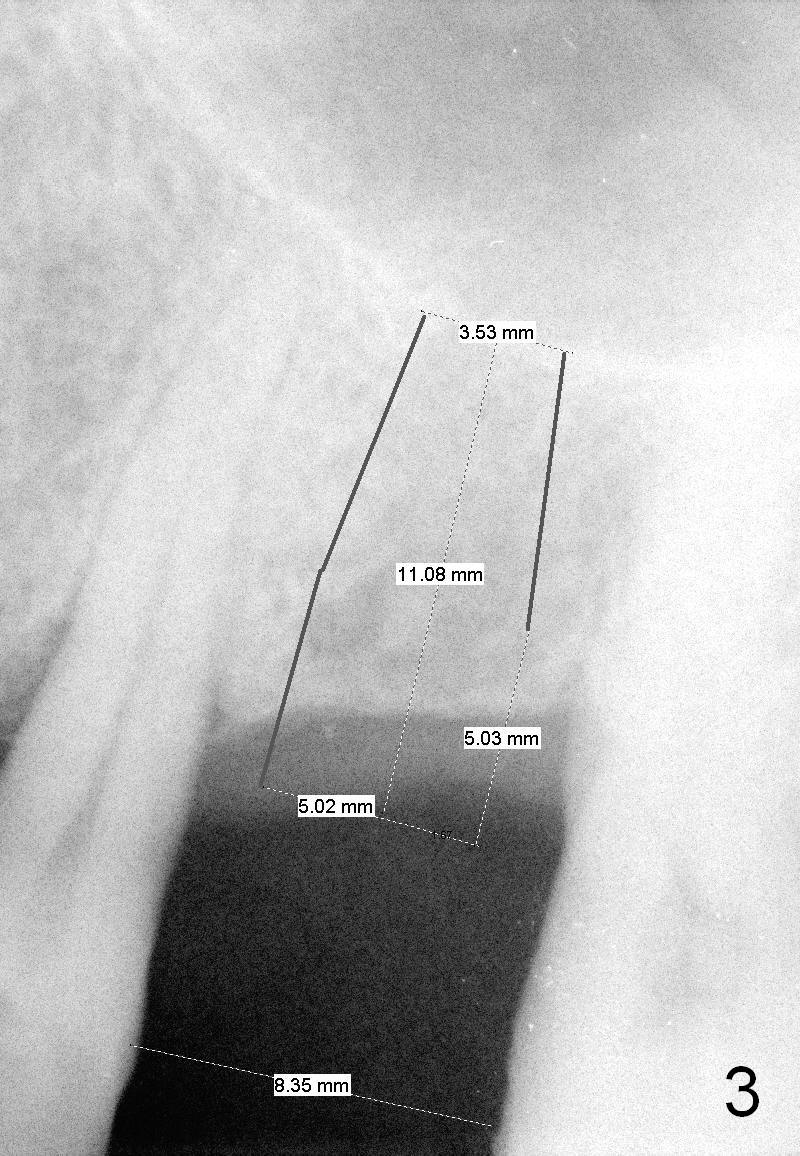
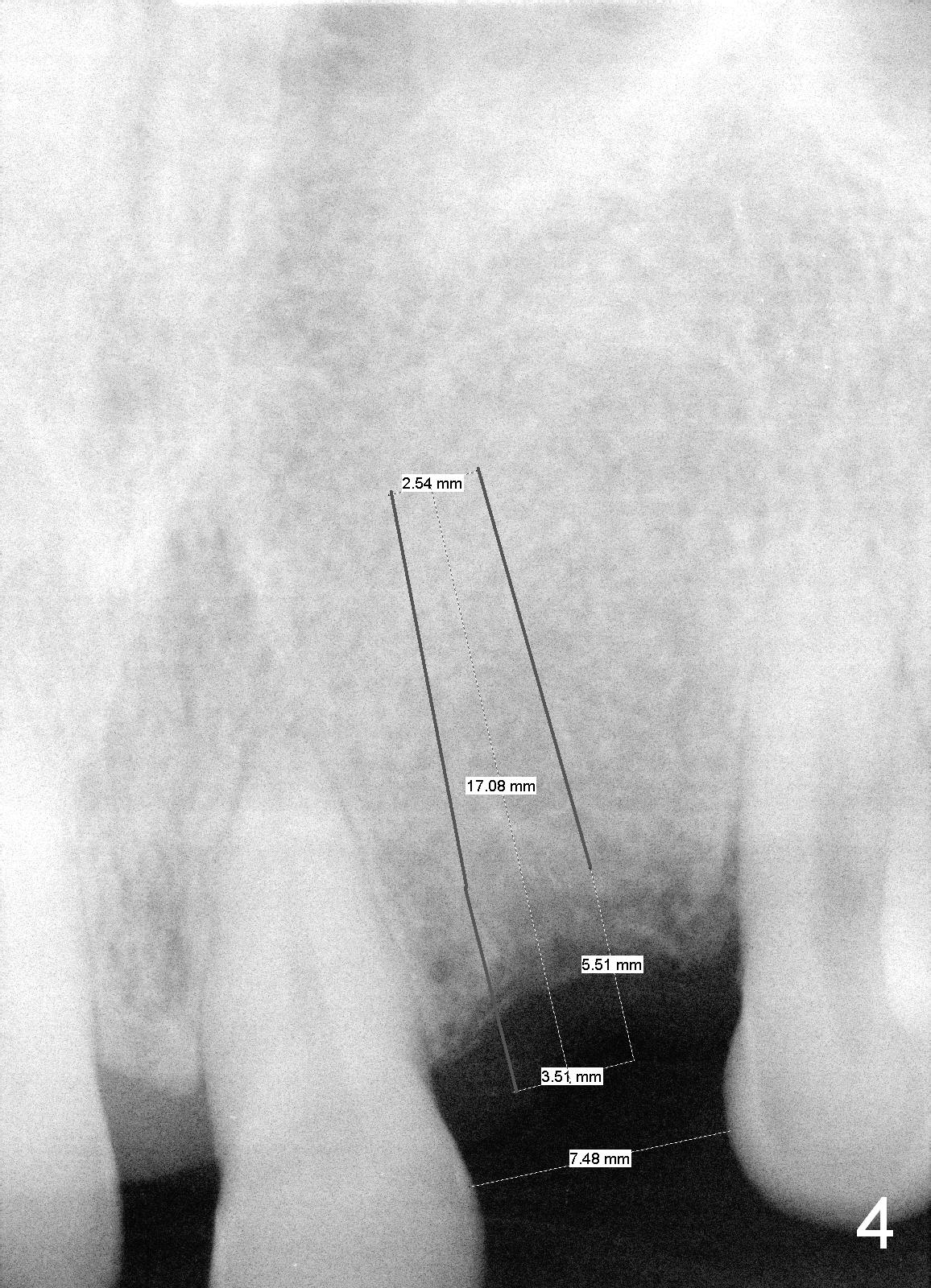
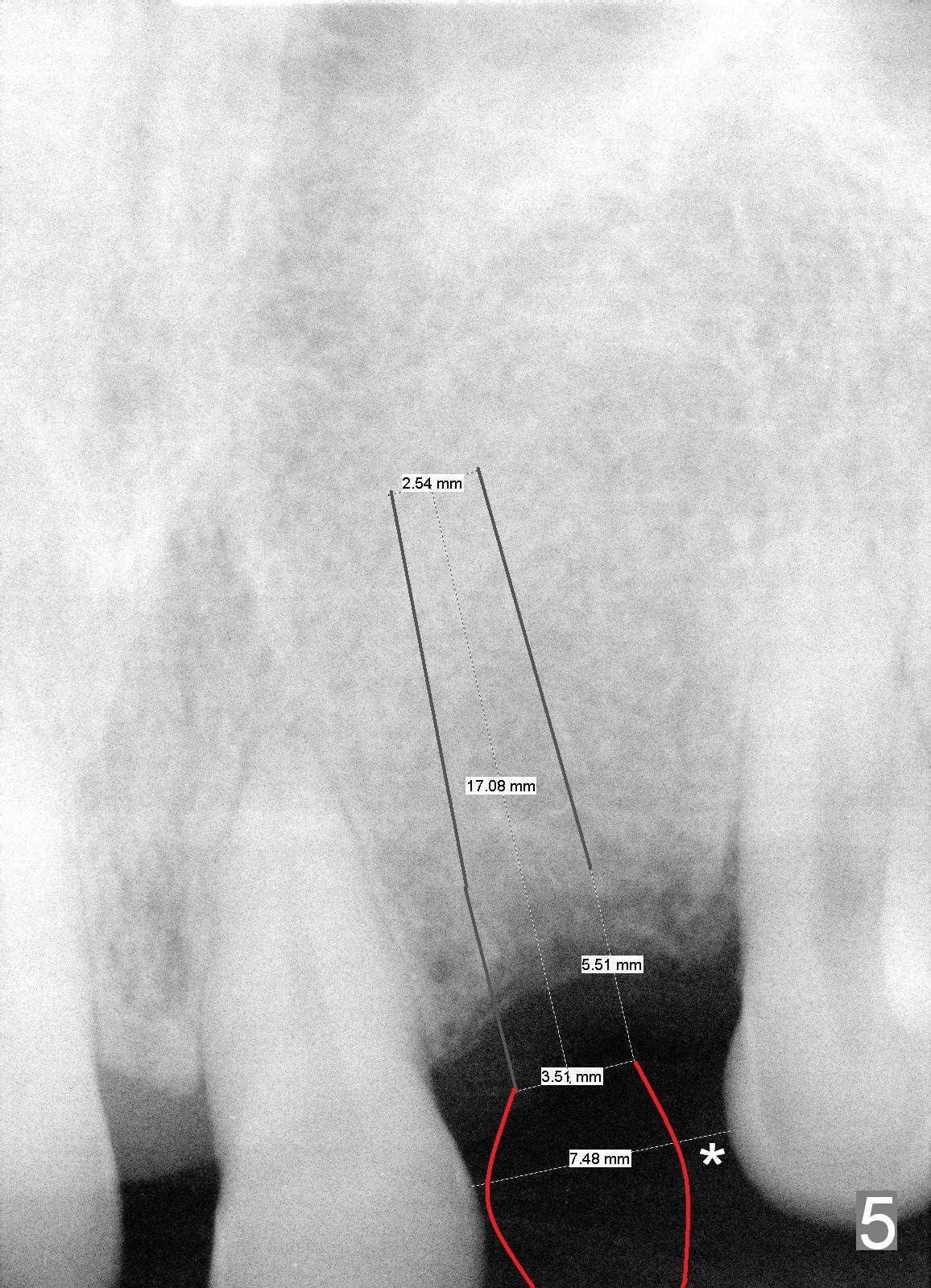
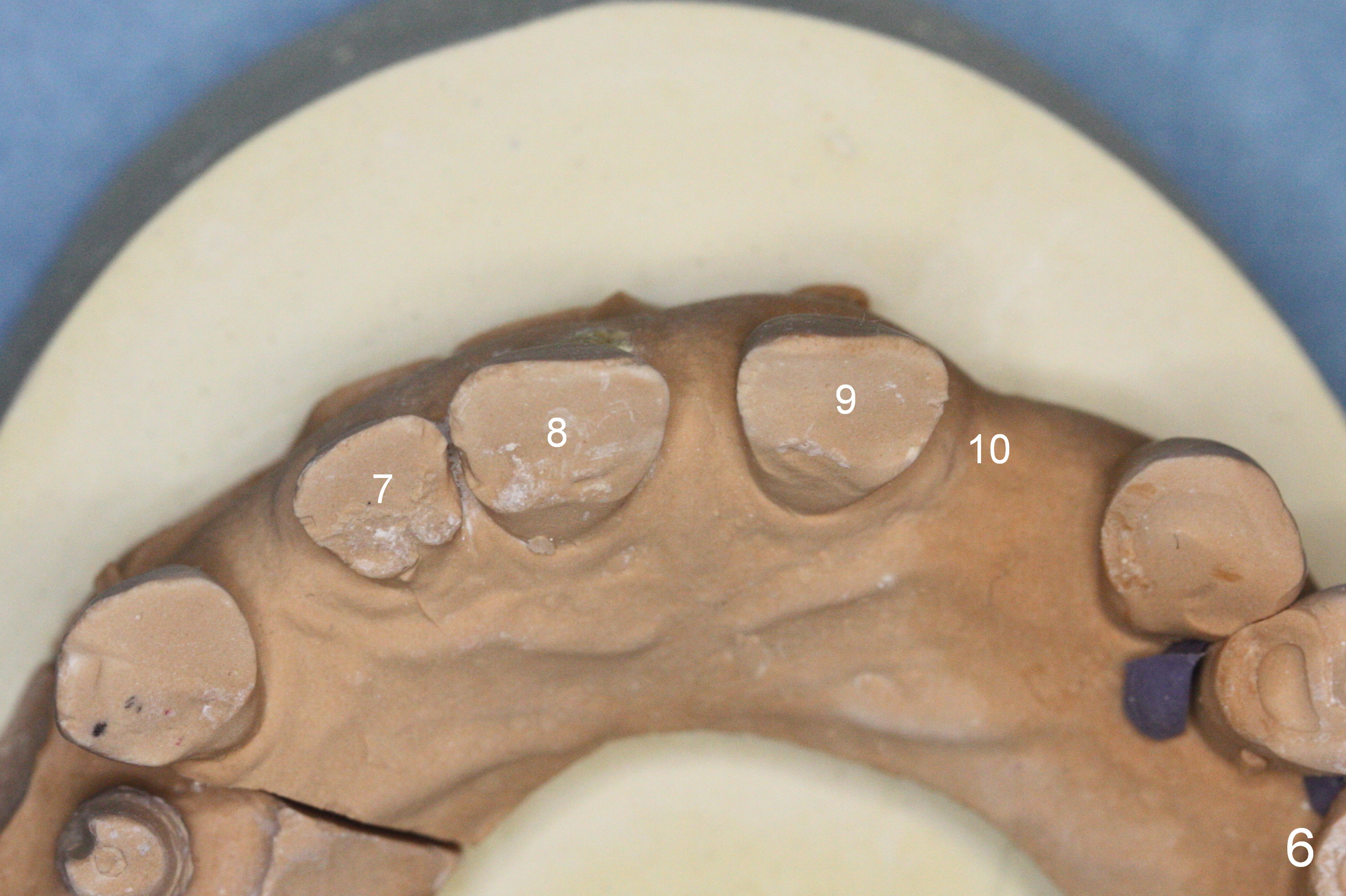
 |
 |
 |
|
 |
 |
 |
|
Small Implants
A 58-year-old man has multiple missing teeth including #14; the remaining teeth has sign of occlusal trauma (bone loss, Fig.1 arrowheads). The mesiodistal space of #14 is 8 mm (Fig.2). It appears that a 4.5x14 mm implant is appropriate for the site with sinus lift. Scalpel will be used to initiate osteotomy and bone expansion in case the bone density turns out to be low. To prevent the sinus membrane perforation, use a shorter implant (11 mm, Fig.3).
To prevent implant loss due to bone loss after loading, the immediate provisional will have normal occlusion 2-3 months postop for 1-2 months before impression (progressive loading). In fact, the surgery is changed to placing implants at #3 and 5.
Although the edentulous space is not narrow at #10 (Fig.4), a small diameter implant should be used due to anterior diastemata (Fig.5). The implant will be placed slightly mesially to have a diastema distally (Fig.6 *). If there is a labial apical concavity, a shorter implant will be placed (14 mm). Also prepare angled 1-piece implants. Take preop photos to show the labial concavity if present.
Return to Upper
Incisor, Molar Immediate Implant,
IBS
Xin Wei, DDS, PhD, MS 1st edition 06/27/2016, last revision 11/10/2016